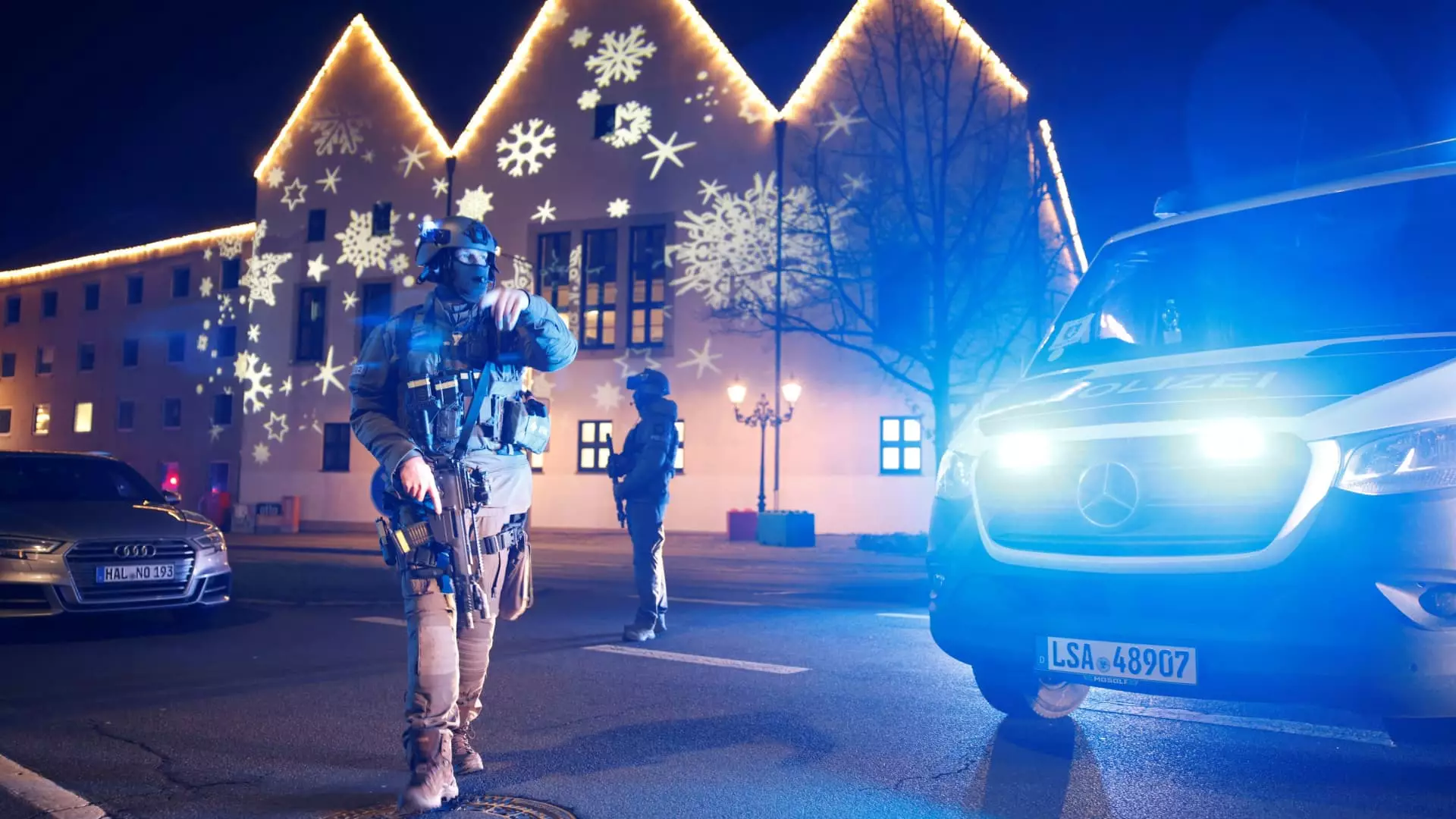On a tumultuous day marked by tragedy, Magdeburg, Germany, became the scene of a horrific crime when Taleb al-Abdulmohsen, a 50-year-old Saudi doctor, allegedly drove a vehicle into a crowded Christmas market. This shocking act of violence resulted in the deaths of five individuals, including four women and a nine-year-old boy, marking a dark chapter in the unfolding narrative of societal tensions, extremism, and the complexities surrounding immigration. As police and forensic scientists delve deeper into the motivations behind this attack, the implications resonate far beyond the immediate bloodshed.
The chilling event, which occurred on a festive Friday, involved al-Abdulmohsen maneuvering a black BMW through an emergency vehicle gap designed to secure the market from such tragic incidents. Eyewitness accounts describe the chaos that ensued as the vehicle sped down a narrow alley, injuring around 200 people, with about 40 critically wounded. As reports emerged of the attacker’s apparent modus operandi, questions arose regarding his intent, with forensic investigations probing whether he had deliberately disabled safety features in the vehicle to increase the damage caused.
Witnesses were left in shock as armed police apprehended al-Abdulmohsen shortly after the incident, a moment that has since been seeded in the minds of bystanders who watched helplessly as the tragedy unfolded. The assault’s immediate impact highlighted not only the vulnerability of public spaces but also the urgent need for comprehensive security measures that can effectively deter similar acts of violence. In the aftermath, local law enforcement has reached out to the public for any photographs or video content that could provide further insights into the events leading up to and during the attack.
Al-Abdulmohsen’s background presents a convoluted portrait of a man whose journey reflects broader societal issues. His asylum-seeking narrative, starting in Germany in 2006 and officially applying for asylum in 2016 due to perceived threats in his home country, raises significant questions about integration and acceptance. Although he had been employed as a psychiatrist in a local clinic, his recent absence from work, attributed to “vacation and illness,” casts doubt on his current state of mind leading up to the attack.
Reports of al-Abdulmohsen’s erratic online behavior and previous expressions of dissatisfaction with German authorities provide a glimpse into a potential ideological drive. His references to grievances against what he viewed as an oppressive German state revealed a troubling alignment with far-right ideologies, including affiliations with anti-immigration groups like the Alternative for Germany (AfD) party. Such associations underscore the potential for radicalization in individuals facing cultural dislocation and reveal how personal grievances can transform into violent manifestations.
This incident shines a spotlight on the ongoing challenges surrounding immigration, integration, and the tensions that can arise from cultural discrepancies. The painful loss of life serves as a somber reminder of the consequences of societal divisions and highlights the dark potential lurking within ideologies that spur individuals towards violent action. As authorities continue to explore the suspect’s motivations, the case raises pertinent questions: How can societies better understand and address the grievances of marginalized individuals? What measures can be taken to prevent such acts in the future?
Security experts caution that the emergence of radicalized individuals acting independently poses a significant threat, a concern echoed by officials worldwide. The increasing visibility of extremist narratives on social media further complicates the landscape, creating challenges for monitoring and intervention.
As the dust settles in Magdeburg, the quest for understanding the root causes of this tragedy continues. The complexities of immigration, identity, and personal grievances against larger societal constructs intertwine to create a narrative that necessitates deeper analysis and stronger preventative measures. In light of the traumatic events that transpired, it is crucial for communities to foster dialogue, promote inclusivity, and develop a vigilant approach to security—ensuring that such violent acts are met with determination and compassion, rather than fear and division. The loss of innocent lives serves as a painful reminder that society must remain steadfast in its endeavor to understand and mitigate the factors that lead to such senseless violence.

